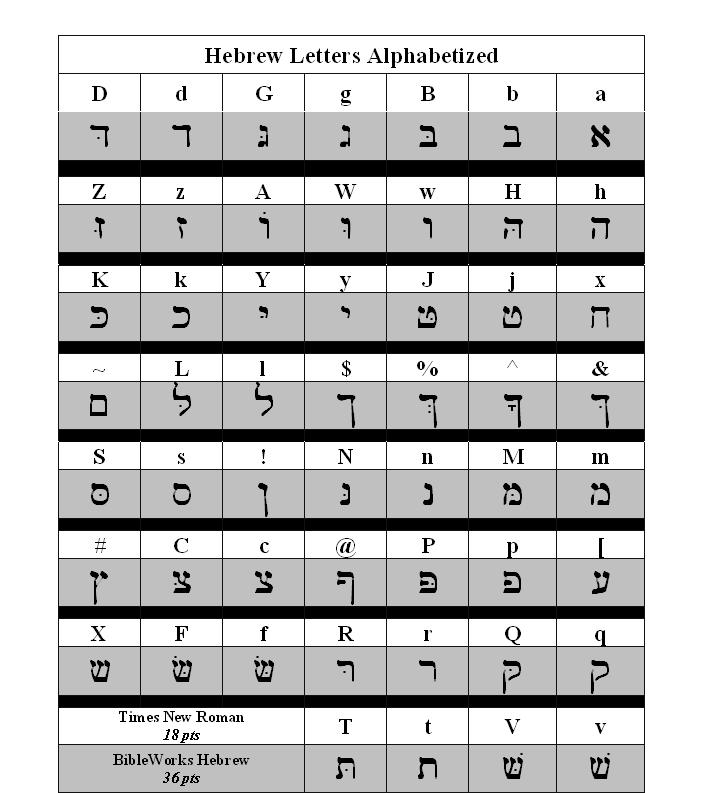Hebrew Fonts Windows
What I ended up doing: I went to my old laptop, went to the Fonts section in control panel, grouped the fonts by type, went to the Hebrew font section, selected all Hebrew fonts, and emailed them to myself. I then went on my new laptop, downloaded the files, selected them all and installed them. Also, to share with anyone else that is interested: In the interim, I discovered a site in which you can download many other Hebrew fonts. While I was able to solve my problem in a roundabout manner, I am disconcerted that such a glitch could happen. Many Hebrew fonts were moved into an optional feature in Windows 10. Installing the fonts from an older version of Windows is not recommended! Instead, there are a couple of ways to get the optional font feature installed.
Most of the optional font features are associated with languages. In this case, if you were to add Hebrew into your language settings, the optional Hebrew font feature would be installed automatically. You can also install any of the optional font features manually. Both of these are done in Settings. • Click the Start button. • Click Settings.

To add the Hebrew language to your language profile: • In Settings, click Time & language. • Click Region & language. • If Hebrew is not included in your languages, click the '+' icon next to Add a language. • Scroll to find Tamil, then click on it to add it to your language list.Once you have added Hebrew to your language list, then the optional Hebrew font feature and other optional features for Hebrew language support will be installed, provided you are online. This should only take a few minutes. To manually add the optional Hebrew fonts feature: • In Settings, click System. • Click Apps & features.
• Click on the link, Manage optional features. • If 'Hebrew Supplemental Fonts' is not listed among the installed features, click on the '+' icon next to Add a feature.
• Scroll to find 'Hebrew Supplemental Fonts'. Click on that item, then click on Install. • Click on the back arrow in the upper corner of the window. You should see the Hebrew feature in the list as installed or in the process of being installed. For more details, or if you have a similar issue with fonts missing after upgrading to Windows 10, see the topic,.
Many Hebrew fonts were moved into an optional feature in Windows 10. Installing the fonts from an older version of Windows is not recommended! Instead, there are a couple of ways to get the optional font feature installed. Most of the optional font features are associated with languages. In this case, if you were to add Hebrew into your language settings, the optional Hebrew font feature would be installed automatically. You can also install any of the optional font features manually. Both of these are done in Settings.
• Click the Start button. • Click Settings. Nero 6 Windows 8 64 Bit here. To add the Hebrew language to your language profile: • In Settings, click Time & language. • Click Region & language.
How to Type Hebrew By Jeff A. Is to download a Hebrew font for the English keyboard. To type Niqud in the Hebrew versions of Windows and Word. Feb 16, 2009 - Other applications, including Paratext 6, also have updated biblical Hebrew support. Users may attempt using these fonts with Windows 2000/XP and Microsoft Word 2000 or 2002. However they must expect to find the experience frustrating. Many problems with Hebrew and right-to-left scripts have been.
• If Hebrew is not included in your languages, click the '+' icon next to Add a language. • Scroll to find Tamil, then click on it to add it to your language list.Once you have added Hebrew to your language list, then the optional Hebrew font feature and other optional features for Hebrew language support will be installed, provided you are online. This should only take a few minutes. To manually add the optional Hebrew fonts feature: • In Settings, click System. • Click Apps & features.